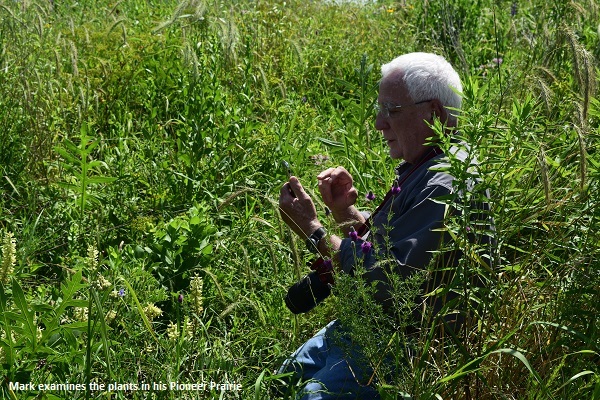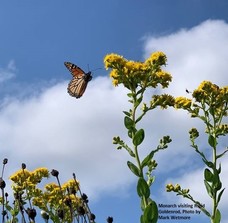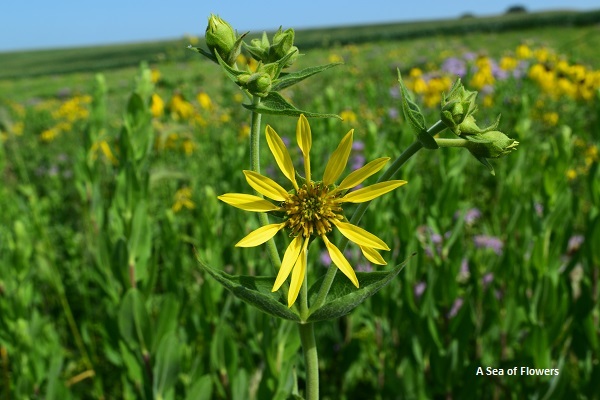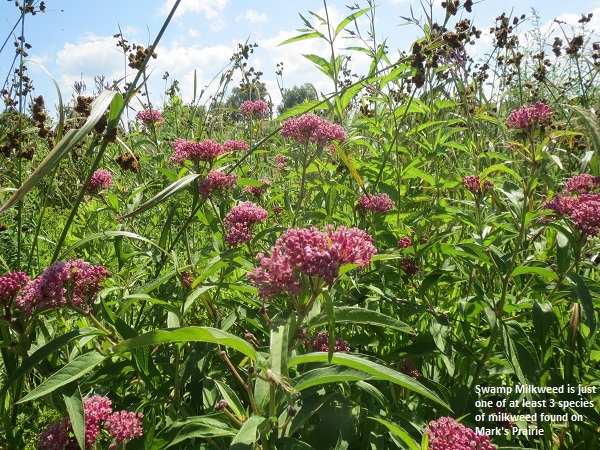|
December 26, 2019
This summer we visited with three landowners who are making a difference for Monarch butterflies and other pollinators by planting prairie. Below we will be introducing you to one of these folks, with one more to follow in subsequent weeks. These landowners have made a commitment to help bring the Monarch butterfly back and support pollinators and other wildlife by planting prairie. We hope their stories will inspire you and give you some ideas about how you could also help save the Monarch and honor Iowa's prairie heritage. Winter is a great time to plan and dream of creating a prairie paradise!
Mark Wetmore, of Vermillion, S.D., owns 80 acres in eastern Woodbury County that his great grandfather homesteaded after the Civil War. “For a long time, I’d thought about using it to recreate a parcel of tallgrass prairie to honor the old pioneers and to permanently return a bit of natural habitat to the community,” said the former City of Minneapolis budget director.
 In the fall of 2015, the corn stalks were disked and on Feb. 1, 2016, they used a broadcast seeder to plant 60 species of native prairie grasses and flowers. The seeding conditions were perfect. It was warm, the ground was soft and moist, and that night there was a heavy snow.
Wetmore returned in the early spring expecting to see a growing prairie. What he saw was nothing. Panic - $60,000 down the drain. But later that spring, he and his companion, Jeanette Williams, returned to see native species coming up in abundance.
Reconstructed prairies feature a variety of native Iowa prairie flowers that benefit pollinators in general and various milkweed species that benefit monarchs in particular. The Eastern monarch population has declined by more than 80 percent over the past 20 years primarily due to habitat loss, including reduced milkweed required for reproduction and fewer nectar plants.
Across Iowa, private landowners who are establishing prairies are helping the monarch by getting more pollinator habitat on the ground to provide fuel, and milkweeds to grow more monarchs.

It took the site a while to fill in, Wetmore said. There were bare patches the first two years. In 2017, he added new species in the drainage areas that were more tolerant of moist soil. In the end, this prairie has 90 different flower species and 24 different grasses.
“Prairie people tell me not to worry,” he said. Prairie needs time to fully mature and it’s an adventure just to see the different stages it goes through.
|
Today, after four years, his prairie is filled with butterfly milkweed, Virginia mountain mint, goldenrod, hoary puccoon, swamp milkweed, spiderwort, rosinweed, partridge pea, cup plant, compass plant, Canadian milk vetch and more. There is always so much to discover!
It’s alive with grasshoppers, monarchs, bees and so much more diversity. Seemingly every milkweed has a monarch egg planted under a leaf. Upland sandpipers have shown up. So have dickcissels, meadowlarks, red-winged blackbirds, deer and pheasants. He was surprised how quickly the mammal dens appeared. The site is surrounded by crop fields on three sides, with a county road on the east. Because Wetmore lives more than an hour away, he has hired a neighbor to help with the mowing and maintenance and, along the way, that neighbor has become an advocate for the prairie in the community.


 Wetmore’s advice? Plan ahead. Work with a pro on the seeding and prep work, try to control Canadian thistles, if there are any, early in the process and generally, try to stay on top of things.
Wetmore worked with the Natural Resources Conservation Service (NRCS) to enroll his prairie in the Conservation Reserve Program CP42 pollinator habitat program
A big thanks to Mark for sharing his wonderful photography.
|